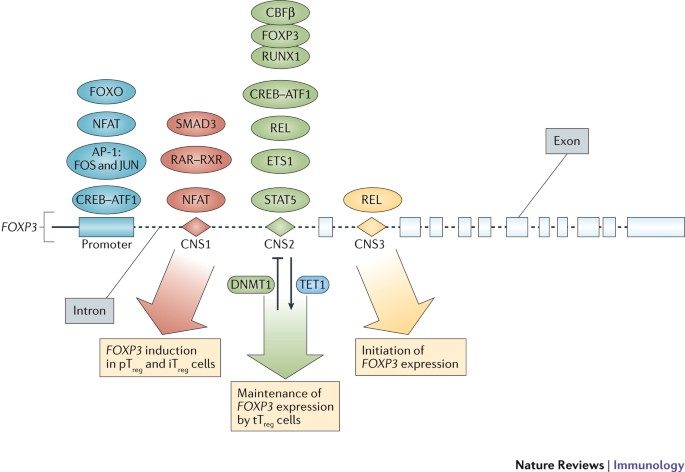What is FOXP3 Protein?
Background of FOXP3
FOXP3, known as Forkhead Box P3, is a protein encoded by the FOXP3 gene in humans. The discovery of FOXP3 dates back to the early 2000s when scientists identified a mutation in the FOXP3 gene as the primary cause of the IPEX syndrome (immune dysregulation, polyendocrinopathy, enteropathy, X-linked syndrome) in 2001.
FOXP3 is located on the short (p) arm of the X chromosome at position 11.23 (Xp11.23). It encodes a member of the forkhead/winged-helix family of transcription factors. The protein structure of FOXP3 is complex – it is composed of 431 amino acids and has a molecular weight of approximately 47 kDa. The FOXP3 protein consists of an N-terminal proline-rich repressor domain, a zinc finger motif and leucine zipper domain involved in protein-protein interactions, and the C-terminal DNA binding forkhead domain critical for its regulatory function.
Function of FOXP3 protein
The FOXP3 protein plays a critical role in the immune system's regulation. It mainly acts as a transcription factor, which means it attaches (binds) to specific regions of DNA and helps control the activity of particular genes. In the immune system, the FOXP3 protein particularly controls the activity of a subset of immune cells called T cells. These are special cells that recognize and fight off foreign invaders like bacteria and viruses. The FOXP3 protein, expressed in a specific group of T cells known as regulatory T cells, helps suppress immune responses and prevent the immune system from attacking the body's cells - a crucial element in preventing autoimmune diseases.

Fig1. The regulation of immune tolerance by FOXP3 (Lu, L. et al. 2017)
The central role of FOXP3 protein is evident in the FOXP3-protein related signaling pathway. A gene mutation in FOXP3 can disrupt T cells' normal functioning, leading to immune dysregulation. The signaling pathway of FOXP3 involves interaction with multiple proteins like NFAT and AML1/Runx1 that exert a suppressive role in the immune responses.
FOXP3 protein related diseases
In relation to diseases, abnormalities in the FOXP3 protein function have been implicated in several autoimmune diseases. As previously mentioned, mutations in the FOXP3 gene were initially linked with IPEX syndrome. This rare and devastating disorder presents with multiple autoimmune manifestations, including type 1 diabetes and thyroiditis. In addition, defects in FOXP3 have been involved in the development of allergies and cancers. Several studies have indicated that lower levels of FOXP3 are associated with poor prognosis in several types of cancers.
The biomedical significance of FOXP3 protein could not be stressed enough. Given its vital role in immune system regulation, the FOXP3 has been explored as a potential therapeutic target. Moreover, FOXP3 expression is being used as a biomarker in cancer prognosis and in tracking responses to anti-cancer treatment. Furthermore, understanding the structure and function of FOXP3 protein can provide insights into the development of therapeutic targets for autoimmune diseases and transplant rejection.
In conclusion, FOXP3 protein has a crucial role in immune regulation, and its abnormalities are linked with several severe autoimmune diseases and cancers. With continued research into its structure and functions, novel therapeutic approaches for a variety of diseases could be developed, highlighting the biomedical relevance of this protein. The FOXP3 protein showcases the delicate balance maintained by our immune system, demonstrating the remarkable intricacy of the human body at the molecular level.
Our Featured Products
| Cat.No. | Product Name | Species | Source (Host) | Tag |
|---|---|---|---|---|
| FOXP3-51H | Recombinant Human Forkhead box P3, GST-tagged | Human | GST | |
| FOXP3-60H | Recombinant Human FOXP3 protein, GST-tagged | Human | E.coli | GST |
| FOXP3-1215H | Recombinant Human FOXP3 protein, His-tagged | Human | E.coli | His |
| FOXP3-59H | Recombinant Human FOXP3 protein, His-tagged | Human | E.coli | His |
| FOXP3-938H | Recombinant Human FOXP3 Protein, His (Fc)-Avi-tagged | Human | HEK293 | His (Fc)-Avi |
| Foxp3-1919M | Recombinant Mouse Foxp3 protein, His & GST-tagged | Mouse | E.coli | His/GST |
| FOXP3-1568R | Recombinant Rhesus Macaque FOXP3 Protein, His (Fc)-Avi-tagged | Rhesus Macaque | HEK293 | His (Fc)-Avi |
Reference
- Lu, L., Barbi, J., & Pan, F. (2017). The regulation of immune tolerance by FOXP3. Nature Reviews Immunology, 17(11), 703-717. https://doi.org/10.1038/nri.2017.75

